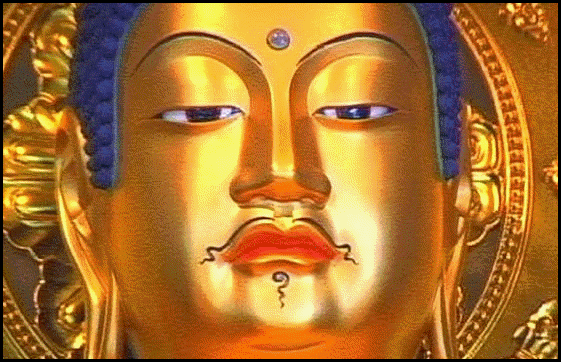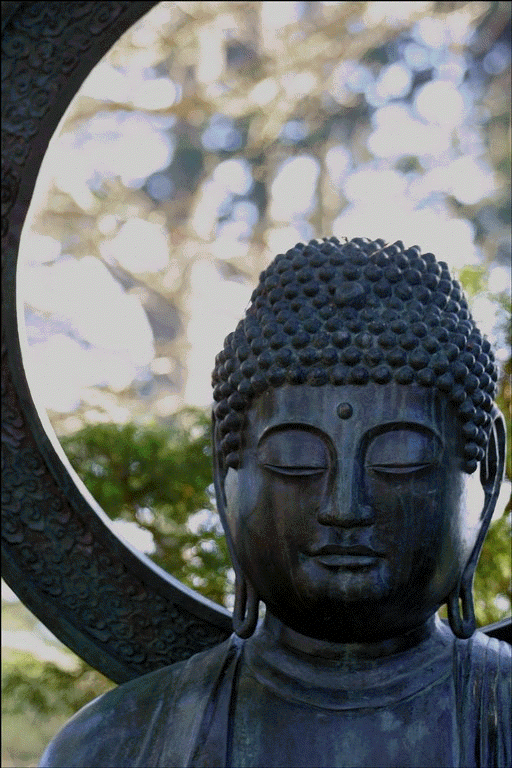
Living in the
Face of Death
The Tibetan Tradition
Glenn H. Mullen
(Snow Lion)

Droplets fall unexpectedly from my nose.
This is the ice of my youth
Being melted by the sun of old age,
Not pearls falling from a necklace.My teeth have all fallen out.
This was not part of a cycle
Heralding the growth of new teeth;
The meals of this life have been eaten,
And the cutlery therefore put away...This poem, "A Conversation with an Old Man," is one of nine meditations on death, part of the Tibetan tradition which includes training, knowledge of signs, longevity, and a ritual "Caring for the Dead."
Specific events and signs can be used to extend life and anticipate death ... and, once death has arrived, such signs can arrange the timing of the departure of the spirit.
"Even when a person is not a meditator, consciousness may remain in the body for as long as three days. Therefore a corpse must not be moved until after the signs appear to indicate that consciousness has departed."
The body should be left untouched until consciousness has departed.
One master, Vasubandhu, stated that with an accomplished meditator, "consciousness can remain for days or even months." But after "departure," it's traditional in Tibet to "offer the body to the birds as a final act of charity."
§ § § Delving into aging, dying and death might be seen a glum project. But Living in the Face of Death is made lively through the details of rituals and meditations. One can even find the tell-tale signs of pending death. "Should the natural redness fade suddenly from the limbs or nails of the body, this indicates death will follow in nine months less a half day."
Should the hair on the nape of one's neck curl upward, this indicates that death will follow in three months' time.
"If when one goes to the toilet one simultaneously emits urine, excrement, and a sneeze, this is also a sign of approaching death."
Other indications include dreams of "being a bridegroom being led away by a musical troupe," of "plucking red flowers again and again," or --- my personal favorite --- "jumping in a river and being swallowed by a fish or mud."
§ § §
The demand that one meditate on death is not an option: it is required. One of Tibetan master said
If on waking up in the morning one does not meditate on death, the entire morning will be wasted. If we don't meditate on it at noon, the afternoon will be wasted. Similarly, if we don't meditate on death in the evening, the night will be lost to meaningless pursuits.
These include the "three roots, nine reasonings, and three convictions" of the scriptures. The last is quite simple: at the time of death
- "Friends and relatives are of no help to us;"
- "Wealth, property, or worldly power is of no help to us;"
- "Even our cherished body, left behind like a pile of garbage, is of no value to us then."
Numbers count heavily in Tibetan Buddhist thanatology ... as they do in the whole of its practice. For example, the meditation on death consists of "the dissolution of the twenty-five coarse substances." The world exists "in ten directions." The blessings of the lineage of the Tibetan gurus "can be repeated three or seven times." "Consciousness Transference" relies on "the five powers:"
intention, the white seed, familiarity, destruction of negativity, and aspiration, or prayer.
Or, the biggest of them all, the definition of dharma: that living beings are afflicted by "84,000 delusions and emotional disturbances."
Living in the Face of Death is enlivened by some memorable passages. One master encourages followers to "Avoid indulgence in the illusory drama of constantly struggling to overcome enemies and pamper friends,"
a meaningless drunken dance that never ends and that leads only to fatigue.
Meditation on death does not mean a visit to the pleasant garden of American cemeteries. Rather, it means an extended visit to places such as the Mangal, Ram or Hanuman ghats where bodies are burnt on platforms.
Speaking of burning, Mullin tells us of a university study where yogis "raised their [bodily] temperatures to between 112 and 115 degrees in a matter of minutes." A note to this passage tells us that "The findings of these doctors are available through the University of Virginia. A film of the procedures of the tests was also made." However,
The yogis found the tests somewhat humorous and sometimes embarrassing, but they braved through them to the end for the sake of fun and science.

--- L. W. Milam